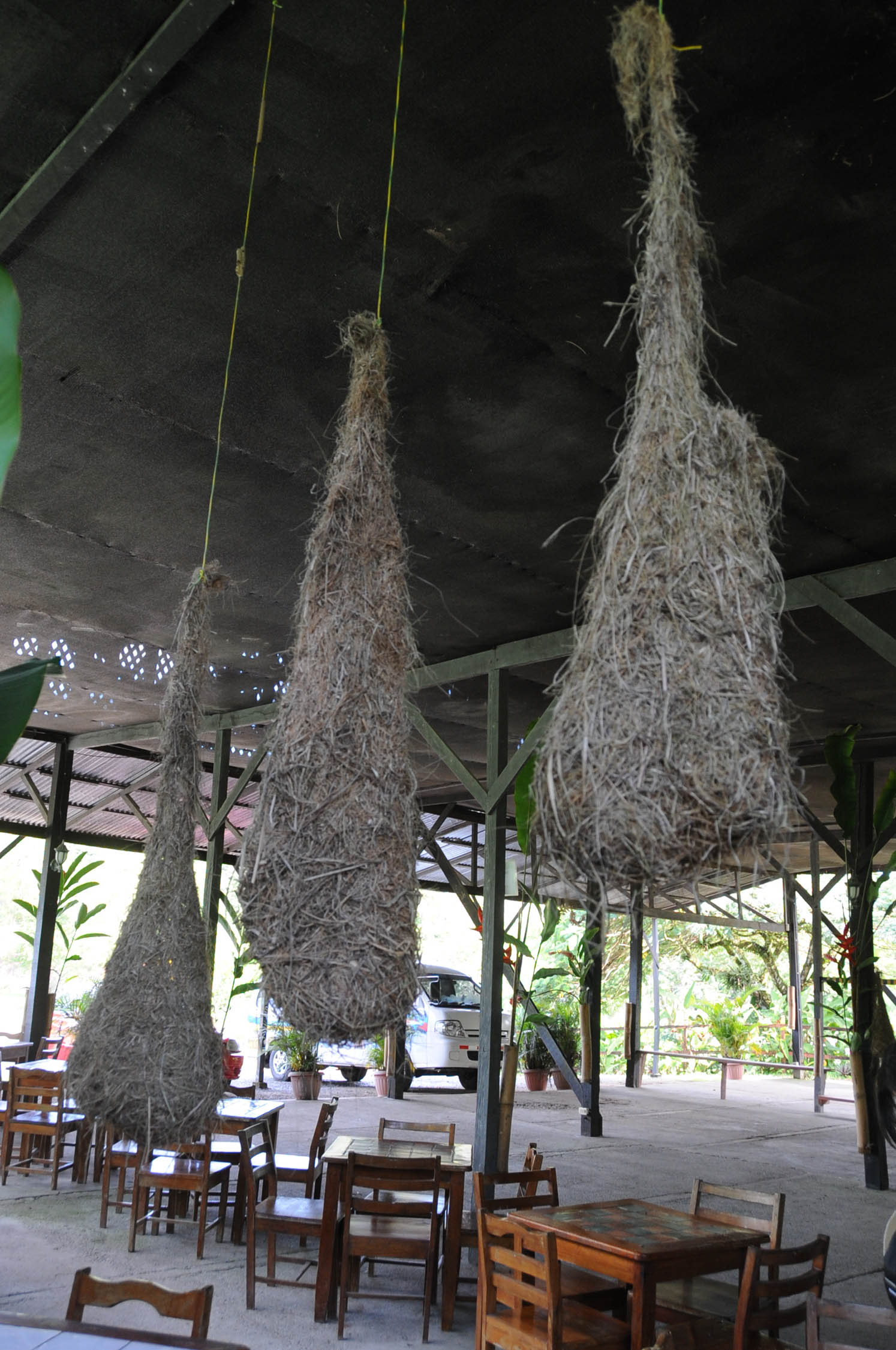Oropendolas on:
[Wikipedia]
[Google]
[Amazon]
Oropendolas are a genus of passerine birds, ''Psarocolius'', in the New World blackbird family Icteridae. They were formerly split among two or three different genera and are found in Central and South America.
All the oropendolas are large birds with pointed bills, and long tails which are always at least partially bright yellow. Males are usually larger than females.
The plumage is typically chestnut, dark brown or black, although the Green oropendola and olive oropendola have, as their names imply, an olive coloration to the head, breast and upper back. The legs are dark, but the bill is usually a strikingly contrasting feature, either pale yellow, or red-tipped with a green or black base. In several species there is also a blue or pink bare cheek patch.
Oropendolas are birds associated with forests or, for a few species, more open woodland. They are colonial breeders, with several long woven basket nests in a tree, each hanging from the end of a branch.
These gregarious birds eat large insects and fruit. They are very vocal, producing a wide range of songs and calls, sometimes including mimicry.
 The following species are recognised in the genus ''Psarocolius'':
* Black oropendola (''Psarocolius guatimozinus'')
* Chestnut-headed oropendola (''Psarocolius wagleri'')
* Russet-backed oropendola (''Psarocolius angustifrons'')
* Dusky-green oropendola (''Psarocolius atrovirens'')
* Green oropendola (''Psarocolius viridis'')
* Crested oropendola (''Psarocolius decumanus'')
The following species are recognised in the genus ''Psarocolius'':
* Black oropendola (''Psarocolius guatimozinus'')
* Chestnut-headed oropendola (''Psarocolius wagleri'')
* Russet-backed oropendola (''Psarocolius angustifrons'')
* Dusky-green oropendola (''Psarocolius atrovirens'')
* Green oropendola (''Psarocolius viridis'')
* Crested oropendola (''Psarocolius decumanus'')
Oropendola videos, photos and sounds
- Internet Bird Collection {{Taxonbar, from=Q1044109
Systematics
 The following species are recognised in the genus ''Psarocolius'':
* Black oropendola (''Psarocolius guatimozinus'')
* Chestnut-headed oropendola (''Psarocolius wagleri'')
* Russet-backed oropendola (''Psarocolius angustifrons'')
* Dusky-green oropendola (''Psarocolius atrovirens'')
* Green oropendola (''Psarocolius viridis'')
* Crested oropendola (''Psarocolius decumanus'')
The following species are recognised in the genus ''Psarocolius'':
* Black oropendola (''Psarocolius guatimozinus'')
* Chestnut-headed oropendola (''Psarocolius wagleri'')
* Russet-backed oropendola (''Psarocolius angustifrons'')
* Dusky-green oropendola (''Psarocolius atrovirens'')
* Green oropendola (''Psarocolius viridis'')
* Crested oropendola (''Psarocolius decumanus'')
Former species
Four species of oropendolas were formerly separated in the genus ''Gymnostinops''. Alternatively, the crested oropendola (and possibly others) would also belong here (Price & Lanyon 2002): * Montezuma oropendola (''Psarocolius montezuma'') * Baudo oropendola (''Psarocolius cassini'') * Olive oropendola (''Psarocolius bifasciatus'') Price & Lanyon (2002) used mtDNA cytochrome ''b'' and NADH dehydrogenasesubunit
Subunit may refer to:
*Subunit HIV vaccine, a class of HIV vaccine
*Protein subunit, a protein molecule that assembles with other protein molecules
*Monomer, a molecule that may bind chemically to other molecules to form a polymer
*Sub-subunit, a ...
2 sequence
In mathematics, a sequence is an enumerated collection of objects in which repetitions are allowed and order matters. Like a set, it contains members (also called ''elements'', or ''terms''). The number of elements (possibly infinite) is calle ...
data to research oropendola phylogeny
A phylogenetic tree (also phylogeny or evolutionary tree Felsenstein J. (2004). ''Inferring Phylogenies'' Sinauer Associates: Sunderland, MA.) is a branching diagram or a tree showing the evolutionary relationships among various biological spec ...
. As is fairly obvious from morphology
Morphology, from the Greek and meaning "study of shape", may refer to:
Disciplines
*Morphology (archaeology), study of the shapes or forms of artifacts
*Morphology (astronomy), study of the shape of astronomical objects such as nebulae, galaxies, ...
, the band-tailed oropendola
The band-tailed oropendola (''Cacicus latirostris'') is a species of bird in the family Icteridae.
It is found at low densities in the western Amazon in Brazil, Ecuador, Peru
, image_flag = Flag of Peru.svg
, image_coat ...
, ''Ocyalus latirostris'' and casqued oropendola
The casqued oropendola (''Cacicus oseryi'') is a species of bird in the family Icteridae.
It is found in Bolivia, Brazil, Ecuador, and Peru. Its natural habitat is subtropical or tropical moist lowland forest
A forest is an area of la ...
, ''Psarocolius oseryi'' are the most distinct species of oropendolas. In fact, they appear to be more closely related to the caciques and both species would be classified in the genus ''Ocyalus''. Alternatively, the casqued oropendola may be separated in ''Clypicterus'', which like ''Ocyalus'' would then be a monotypic
In biology, a monotypic taxon is a taxonomic group (taxon) that contains only one immediately subordinate taxon. A monotypic species is one that does not include subspecies or smaller, infraspecific taxa. In the case of genera, the term "unispec ...
genus.
References
*ffrench, Richard; O'Neill, John Patton & Eckelberry, Don R. (1991): ''A guide to the birds of Trinidad and Tobago'' (2nd edition). Comstock Publishing, Ithaca, N.Y.. *Hilty, Steven L. (2003): ''Birds of Venezuela''. Christopher Helm, London. *Jaramillo, Alvaro & Burke, Peter (1999): ''New World Blackbirds''. Christopher Helm, London. * *Stiles, F. Gary & Skutch, Alexander Frank (1989): ''A guide to the birds of Costa Rica''. Comistock, Ithaca.External links
Oropendola videos, photos and sounds
- Internet Bird Collection {{Taxonbar, from=Q1044109